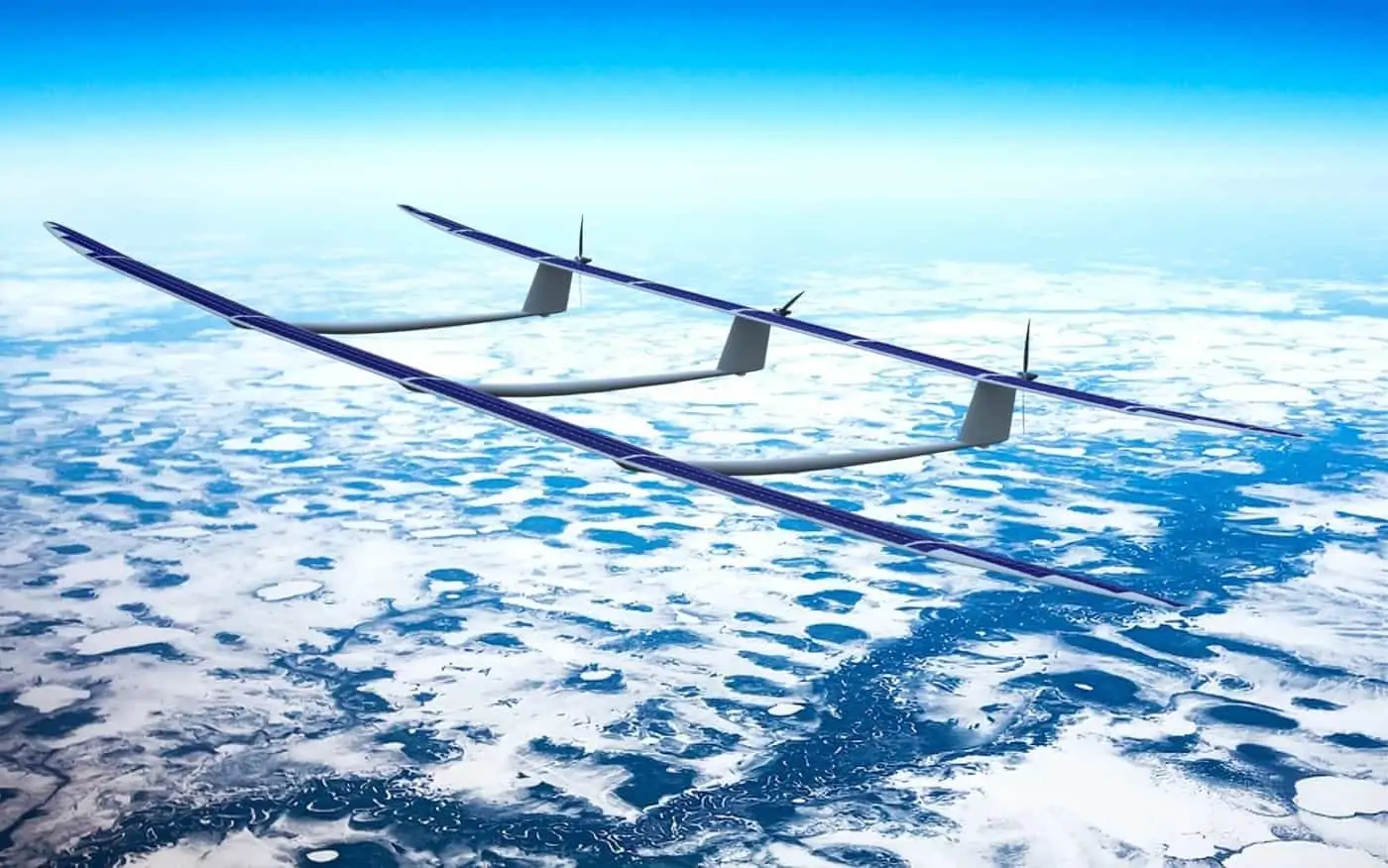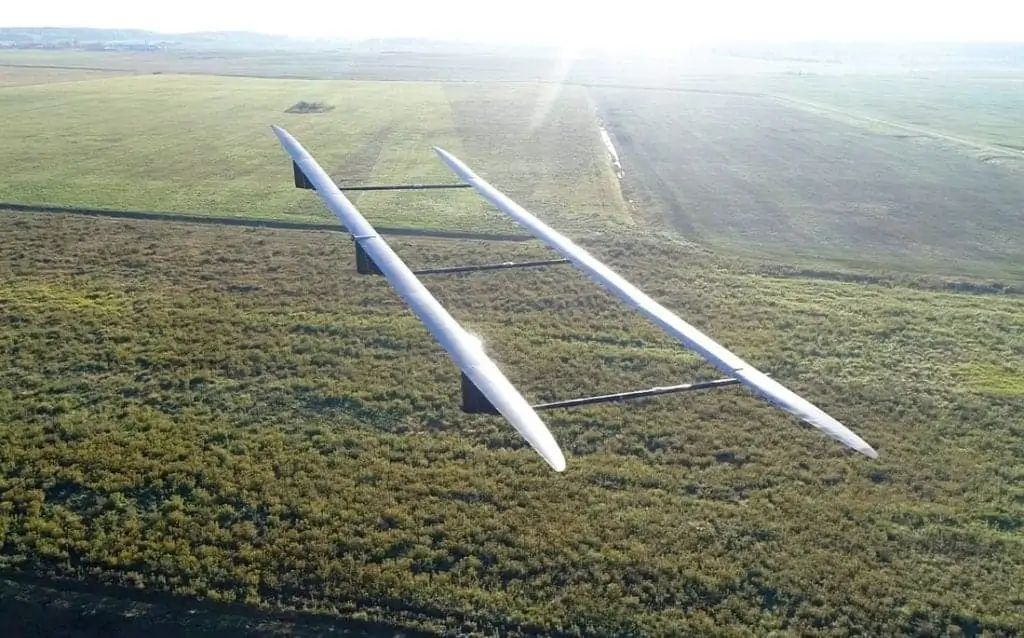HAPS and HALE UAS (High Altitude Long Endurance)
HALE UAS, also known as HAPS (High-Altitude Pseudo-Satellites), are intended to maintain continuous stratospheric operation for periods of many months. Applications of HALE UAVs include persistent surveillance and providing communications in areas where network infrastructure is subpar or non-existent.
Currently, no HALE UAS can perform year-round missions. However, due to growth in the solar industry and unmanned systems technology sectors, research and development of HALE platforms is increasing, and performance continues to improve.
Batteries alone cannot sustain continuous operation of these High Altitude Long Endurance UAVs, and so solar cells are a critical part of their power systems.
Due to the altitudes at which they operate, HALE UAS face unique conditions. Higher altitudes mean lower temperatures, which actually increase the power output of solar cells. The factor by which performance is boosted depends on the temperature coefficient of the material, which in turn can vary over the wide temperature ranges found at these altitudes.
HALE UAS typically operate at altitudes of 15 to 24km, providing them with unobstructed solar irradiation as well as a degree of protection from ultraviolet radiation due to the ozone layer. In addition to temperature, the solar performance of these cells also depends on spectral irradiance, which in turn varies with time of day, time of year, and angle of incidence of the solar cell to the sun.
Because of their size, weight is an exponentially growing concern for HALE UAVs. Solar cells for HALE UAS need to be lightweight as well as flexible in order to allow for easy integration into the wing structure. Due to the harsh environments in which these aircraft operate, the UAV solar cells and their encapsulation system need to be highly resistant to extreme temperatures, vibration and flexing.




















